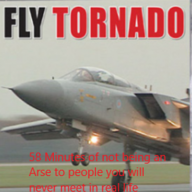Background:
[/url]http://www.airservicesaustralia.com/wp-content/uploads/FAQ_ADS-B_DEC16.pdf
See pages 13 (I fly IFR in Class G) to 15 (I fly a sport aircraft in Day VFR)
5,000 Foot Coverage of ADSB (See full page for more maps)
Summary: Mode S coverage is going down. Anywhere there is current Mode S coverage, there should also be ADSB Out coverage, right now. That includes Class C and D air space. There is a mandate to only clear ADSB (Out) equipped aircraft in to / out of Class C and D airspace for January 1 2020, in Australia. CAO 20.18 provides exceptions to this mandate. any aircraft (IFR or VFR) manufactured on or after February 2014 is required to have a Mode S Extended Squitter, ADS-B capable transponder if it operates in Class A, B, C or E airspace; or above 10,000 feet in Class G airspace. This includes aircraft that will be registered with the RAAus.
By 1 January 2020, any aircraft flying IFR with TCAS will also have ADSB Out. Both systems support aircraft-to-aircraft direct notification however, ADSB In is required to display traffic where TCAS will provide audible notification of conflicts.
So for local VFR flights around your own farm, use a registered PLB or something like a Spot Tracker / Spider Tracks, listen to the radio and look out the window.
Returning to the question, which might be "how can I see more of the traffic around me and have them see me?". My opinion is its the wrong question.
The more informative and perennial question might be "how do I improve my situational awareness, that of other air space users and not go broke". Some answers may include:
1. Have Mode S plus ADSB Out in your VH registered or 25- registered aircraft where it makes sense to do so (e.g. operating in or near Class C or D). Its possible to have ADSB Out and not have Mode S with altitude (see Appareo Stratus ESG, Garmin GTX335 etc) but why would you?
2. ADSB In receivers are cheap, tablets (e.g. iPad) make good displays that can be moved between aircraft and home. Having another display in the cockpit means the pilot has another distraction. Many EFBs will receive and display traffic from an ADSB In receiver
3. Install and use two radios. This allows for two-way situational awareness when IFR traffic are going up or down nearby while also monitoring the dreaded CTAF
4. Read the NOTAMs. If a bunch of gliders or balloons are in a competition it pays to know what their plans are
5. Look out the window and know some airspace users can't or won't make themselves known for some valid reasons. Life does not end at the edge of an iPad
6. PLBs should be carried in the absence of an in-aircraft 406 Mhz ELT. Consider having both
Information here is worth what you paid for it...



